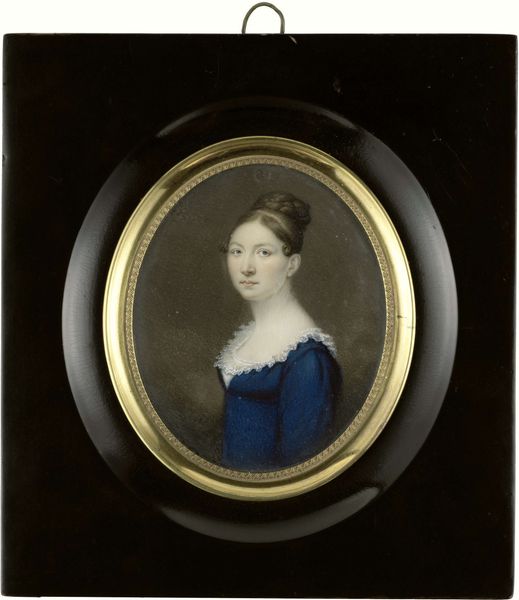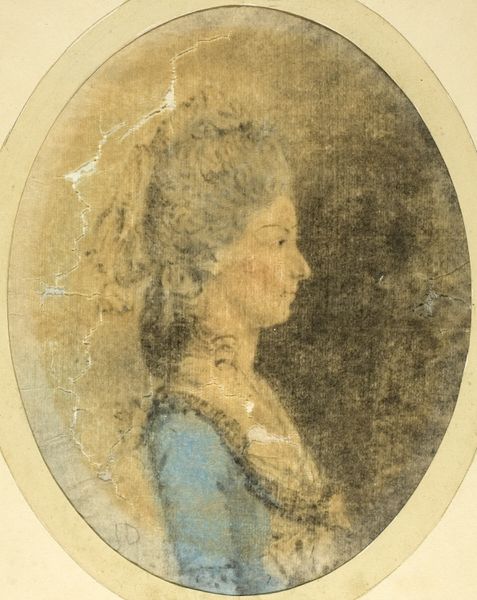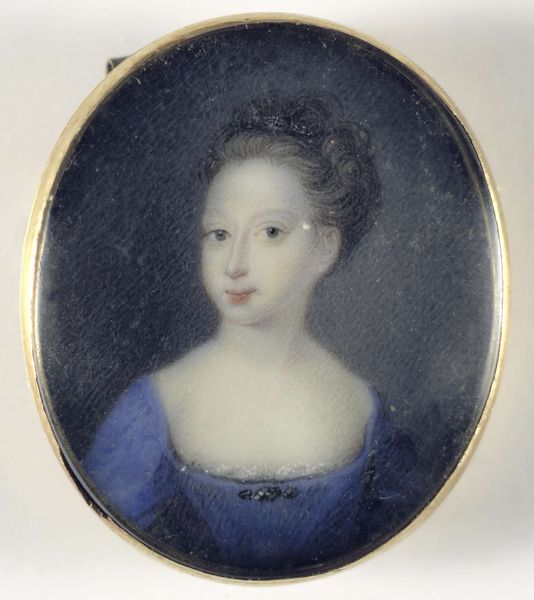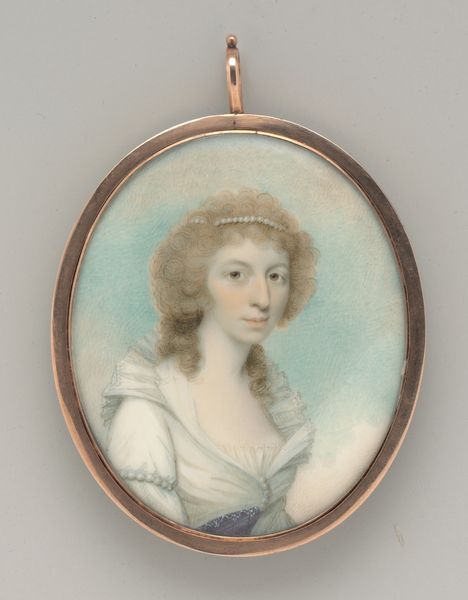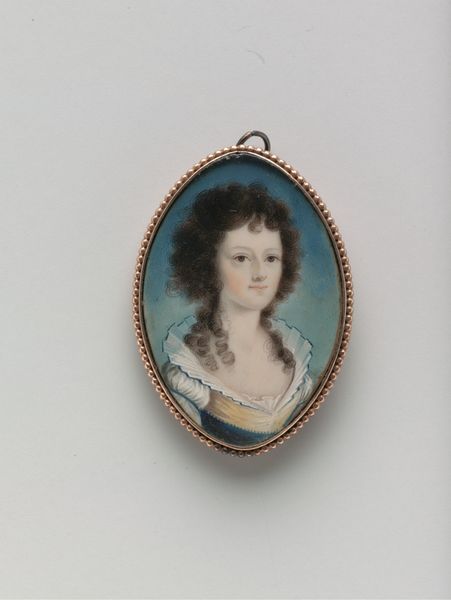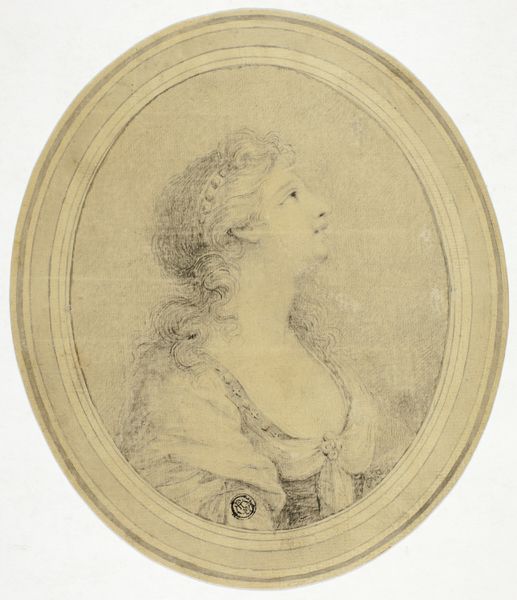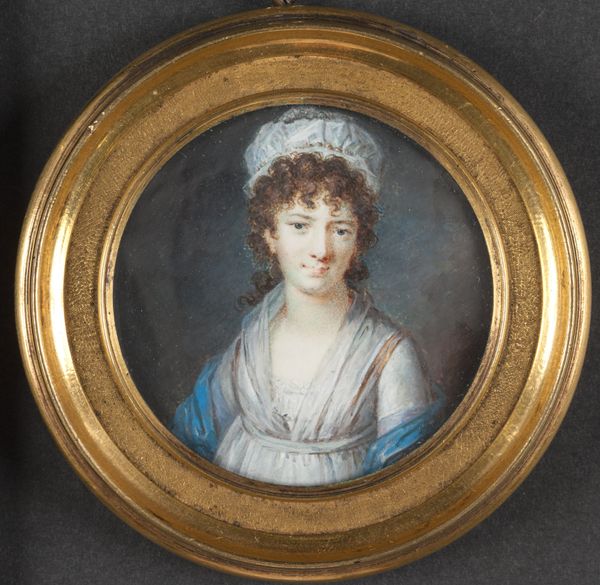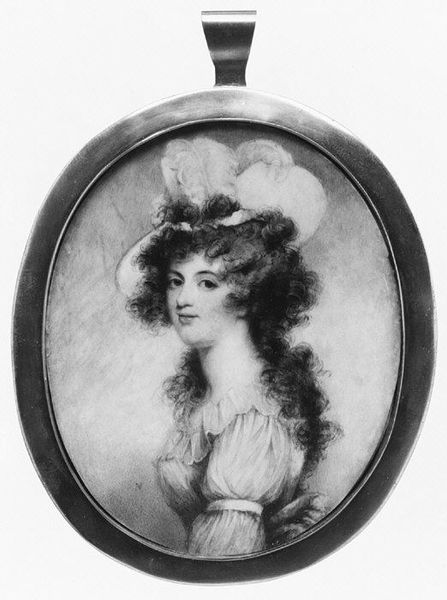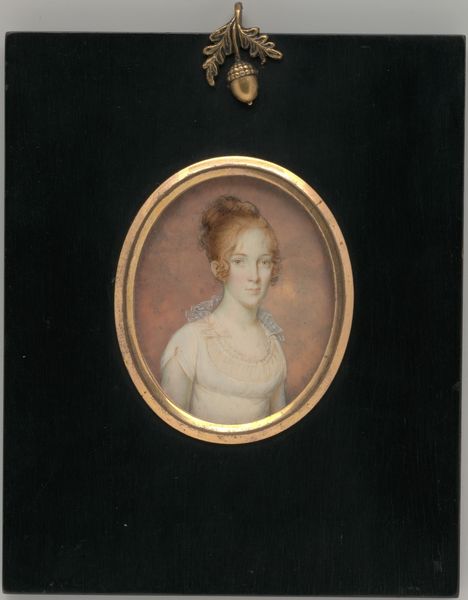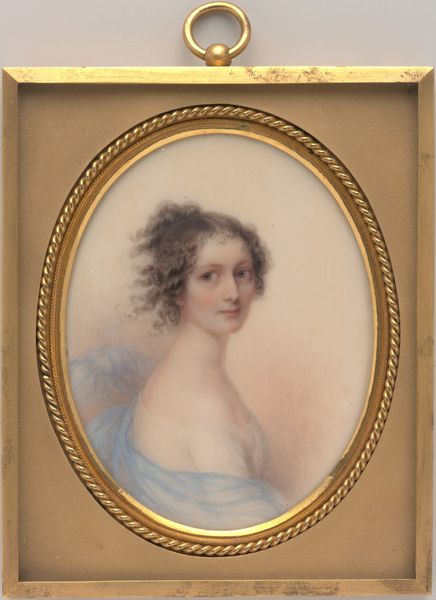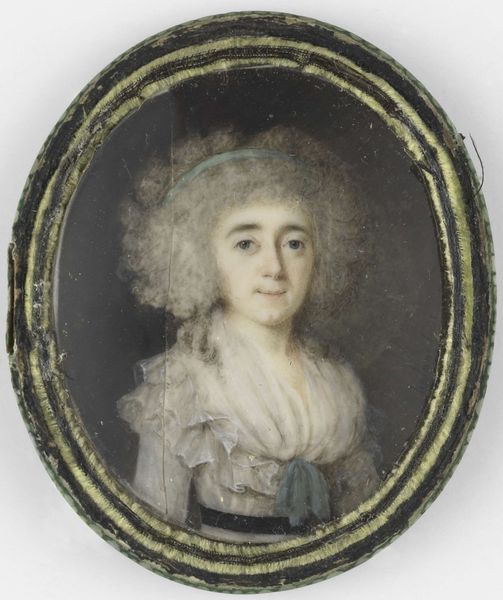
painting, oil-paint
#
portrait
#
baroque
#
painting
#
oil-paint
#
sculpture
#
miniature
Dimensions: height 3.5 cm, width 2.8 cm, height 4.9 cm, width 3.6 cm, depth 0.6 cm
Copyright: Rijks Museum: Open Domain
Curator: It’s quite ethereal, isn’t it? So delicate. Almost faded, like a forgotten dream. Editor: Indeed. What we are looking at is a miniature portrait of Hortense Mancini, Duchess of Mazarin. The portrait, crafted with oil paint, is unsigned and undated, placing its creation sometime between 1665 and 1685. It embodies a specific era, a time when status was portable. Curator: Portable, exactly! It's like carrying around a tiny echo of power and beauty. You imagine someone gazing at this during a long journey or holding it tight during turbulent times, maybe even during secret rendezvous. I see longing in the softness of her expression; that wistful air could capture an entire scandalous romance, condensed in a jewel! Editor: Precisely, miniatures like these had a particular function in society. Hortense Mancini, niece of Cardinal Mazarin, was known for her intelligence and scandalous affairs. This miniature served not just as an image of beauty, but as a statement of her persona—circulated within aristocratic networks, carrying social and political weight far exceeding its diminutive scale. It was Baroque glamour meeting the era's political game. Curator: It almost feels scandalous that such a glimpse can tell so much. How the eyes are shaded, the implication of unbound hair, all so suggestive… You know I am completely drawn into the intimate quality of this work. The size lends itself to this sort of interaction. Editor: Yes, there’s this incredible tension—between the sitter's personal life and public identity. These objects highlight the function of art as an instrument to elevate its patrons. Though small, the portraits told a broader narrative regarding position and expectation of these leading figures. And today, despite its worn presentation, the work serves its purpose for discussion. Curator: And so it remains… a relic of whispers and gazes and bygone, burning stories. The layers have acquired such meaning and so much potential in those markings of time. Editor: It indeed prompts considerations on what is seen, felt, and ultimately told about powerful women across history.
Comments
No comments
Be the first to comment and join the conversation on the ultimate creative platform.


